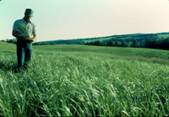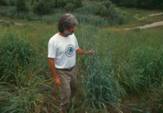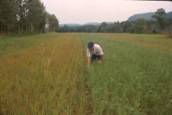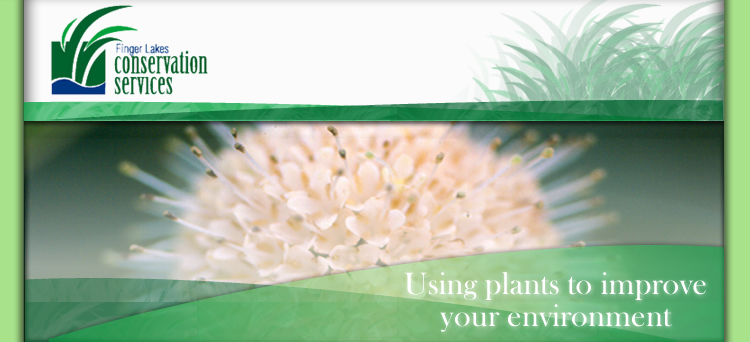Finger Lakes Conservation
Services has experience with:
NATIVE
OR INTRODUCED GRASSLAND PLANTINGS:
PRAIRIE OR MEADOW INSTALLATION
WILDLIFE HABITAT IMPROVEMENT
GRASS BUFFERS FOR SEDIMENT TRAPPING AND ENHANCED INFILTRATION



FLCS prefers to use native species wherever they are appropriate.
It is our experience that their capabilities add more value to
a site than introduced grasses are able to provide.
Most introduced grasses are cool season grasses,
and many native grasses are warm season grasses.
These terms relate to when the grasses produce their major growth.
Native warm season grasses are more
stress tolerant, longer-lived, deeper rooted, and often produce
more above ground biomass than the introduced species. Greater
structure in the grass sward will trap dust, glare, blowing snow
and noise. The native grasses tend to be a good fit in plantings
where multiple vegetation types are desired (grass plus wildflowers
and/or woody plants). They also produce better cover for wildlife
than do the introduced grasses, and offer more management options
including a lower maintenance requirement on most sites.
Though native warm season grasses are generally
attractive to wildlife, they are NOT attractive to geese and
are NOT a preferred food source for deer. Geese prefer to have
good sight distance and cannot see over or through the taller
native grasses. When wildflowers are in the grass stand, native
pollinating insects find them very attractive. These traits may
be of significant value to some landowners.
There are site use objectives that are best served by introduced
cool season grasses. Closely mowed lawn is one obvious example.
Temporary cover is another. Sites that receive high nutrient
loading and/or deep sediment depositions may be a third. Not
everyone has the aesthetic appreciation for native grasses that
we do, and we can work with the introduced species as well. Still, native
grasses are a specialty and we would welcome the chance to understand
your needs and help you weigh the options.





